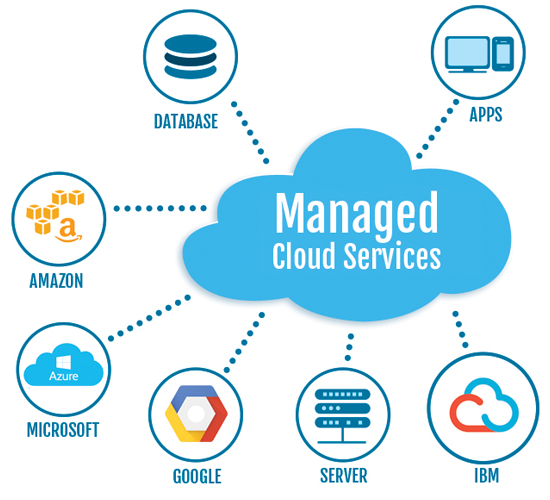Opening Success with LinkDaddy Cloud Services: Maximizing Universal Cloud Service Influence
Opening Success with LinkDaddy Cloud Services: Maximizing Universal Cloud Service Influence
Blog Article
Simplify Your Framework With Cloud Services
As services navigate the ever-evolving landscape of modern technology and information administration, the function of cloud solutions in streamlining framework has become progressively popular. Exactly how can companies efficiently browse this change and genuinely open the capacity of cloud services for streamlining their facilities?
Benefits of Cloud Provider
Cloud services offer a structured strategy to managing IT infrastructure, giving services with scalability, adaptability, and cost-efficiency. One of the essential advantages of cloud solutions is the scalability they provide.
In addition, cloud solutions eliminate the requirement for businesses to spend in pricey hardware and software. This cost-efficiency is a considerable benefit, specifically for tiny to medium-sized enterprises wanting to lessen upfront costs. By using cloud services, organizations can access top notch IT resources without the hefty cost related to conventional infrastructure configurations.
Furthermore, cloud services give organizations with the flexibility to access their information and applications from anywhere with a net link. This degree of access improves cooperation among groups, enables remote job, and boosts total efficiency. The flexibility supplied by cloud solutions encourages businesses to adjust promptly to altering market conditions and customer demands.
Cost Financial Savings and Scalability
Along with the operational benefits highlighted earlier, the assimilation of cloud solutions right into a firm's framework comes up with substantial expense savings and enhanced scalability. Cloud solutions use a pay-as-you-go model, permitting companies to scale sources up or down based upon present needs, thereby staying clear of the costs related to maintaining excess capacity. This versatility enables firms to adapt swiftly to fluctuating needs without incurring unnecessary expenditures.
Furthermore, cloud services remove the demand for in advance financial investments in software and hardware, minimizing capital investment. Operating budget are also lessened as business no more need to manage and maintain physical servers, causing lower power consumption and IT staffing expenses. Additionally, cloud services provide automatic updates and maintenance, guaranteeing that the framework continues to be protected and current without requiring manual interventions.
Enhanced Safety And Security Procedures
Executing stringent protection procedures is critical when integrating cloud services into a firm's facilities to make sure and protect sensitive data conformity with market laws. Cloud provider provide boosted safety features such as information file encryption, firewall software security, and multi-factor authentication to alleviate cybersecurity dangers. File encryption helps safeguard data both at remainder and in transportation, ensuring that just authorized users can access delicate details. Firewalls serve as an obstacle in between external threats and internal networks, monitoring and controlling outgoing and incoming network traffic. Multi-factor authentication adds an additional layer of security by requiring customers to offer numerous kinds of verification prior to accessing the cloud services.
In addition, routine safety audits and conformity assessments assist recognize vulnerabilities and guarantee adherence to market standards. Business can also take advantage of features like automated security updates and real-time danger tracking supplied by cloud service providers. By focusing on safety and security procedures and staying proactive image source in dealing with prospective threats, organizations can with confidence take advantage of cloud solutions while protecting their beneficial data from unauthorized accessibility or breaches.
Transitioning to Cloud Infrastructure
To efficiently incorporate cloud services into a company's infrastructure, an organized approach that addresses the shift towards cloud-based options is imperative. Transitioning to shadow facilities involves careful planning and implementation to make certain a smooth migration procedure. The initial step is to assess the existing framework and determine which systems and applications appropriate for movement to the cloud. This assessment needs to consider aspects such as information level of sensitivity, conformity requirements, and performance needs.
As soon as the assessment is complete, a movement method weblink need to be created. This method should describe the timeline, sources, and duties for relocating each element to the cloud. It is important to interact this plan clearly to all stakeholders to make sure positioning and lessen disruptions throughout the transition.
Throughout the migration screening, procedure and monitoring are crucial to determine and attend to any issues promptly. Routine checkpoints should be established to track progress and make needed adjustments. In addition, training for workers on utilizing cloud services should be provided to guarantee a successful shift and optimize the advantages of the new infrastructure.
Finest Practices for Cloud Fostering
Successful fostering of cloud solutions depends upon the tactical placement of service purposes with technological capabilities and business readiness. To make certain a smooth change to the cloud, organizations need to begin by carrying out a detailed evaluation of their current infrastructure and identifying which work are best fit for cloud movement. It is important to include vital stakeholders from website link various departments in the decision-making procedure to gain buy-in and resolve any issues early.
Another ideal practice for cloud adoption is to focus on safety and compliance. Organizations has to carefully assess the security actions provided by cloud company and make sure that their data is protected according to market requirements and governing needs. Implementing durable information encryption, access controls, and regular protection audits can assist minimize dangers connected with cloud adoption.

Conclusion

As services browse the ever-evolving landscape of innovation and information management, the role of cloud services in simplifying facilities has come to be increasingly prominent - cloud services press release. Exactly how can companies effectively navigate this shift and genuinely unlock the capacity of cloud services for streamlining their facilities?
Cloud services use a structured method to managing IT facilities, providing businesses with cost-efficiency, scalability, and versatility. By using cloud services, businesses can access top notch IT resources without the hefty cost tag connected with conventional infrastructure arrangements.
To make certain a smooth transition to the cloud, companies ought to start by carrying out a comprehensive evaluation of their present infrastructure and identifying which workloads are best matched for cloud migration.
Report this page